- Background: Starting from Zero
- The German VW Battery Module Project: First International Tech Collaboration
- Project Documentation and Resources
- International Technology Networks: Building from Zero
- Establishing Overseas Tech Connections
- Poland - Accessing Eastern European Developer Talent
- Indonesia - Southeast Asian Development Resources
- Thailand - Regional Technology Hub
- Malaysia - Multilingual Technical Talent
- Brazil - Latin American Technology Access
- United Kingdom - European Technology Networks
- Kazakhstan - Central Asian Technology Potential
- Results from International Tech Networking
- Establishing Overseas Tech Connections
- Lessons from Building International Tech Connections
Background: Starting from Zero
As head of the strategic planning division with a development department, I work primarily as a developer. Our company had no history of international connections—all operations were domestic. The idea of working with overseas partners, accessing international talent pools, or exploring global technology markets simply wasn’t part of our business model.
Two years ago, I started exploring the possibility of international tech collaborations. This wasn’t driven by company strategy or market demands—it was more about recognizing that limiting ourselves to domestic-only operations might be constraining our technological growth and development capabilities.
The German VW Battery Module Project: First International Tech Collaboration
How It Started
The opportunity with Volkswagen Germany came up through tech conferences and developer networks. As someone working in strategic planning with hands-on development experience, I could see the technical merit of their AI-BMS requirements. Our company had never worked with international automotive clients before, but the technical challenges aligned well with our AI and embedded systems capabilities.
Navigating the MOU and Technical Requirements
Working on international contracts was new territory for our company. The MOU and PO process with VW required understanding automotive industry standards and international development practices that we hadn’t encountered in our domestic projects.
Technical Scope and Development Focus
The project involved developing AI-based battery management systems with specific automotive requirements:
Technical Development Areas:
- AI Algorithm Development
- SOC calculation algorithms
- Real-time parameter monitoring systems
- Battery health prediction models
- Fault detection and alert mechanisms
- Integration and prototype demonstration
- System Documentation
- Functional AI-BMS prototype
- System architecture documentation
- AI model specifications
- Integration guidelines
- Testing protocols
- Development Timeline
- Phase 1: Research & Design (3 months)
- Phase 2: Development & Implementation (6 months)
- Phase 3: Testing & Demonstration (4 months)
- IP and Knowledge Transfer
- AI algorithms and software code
- Technology transfer documentation
- Future collaboration framework
- Technical knowledge sharing
Building Technical Partnerships
Collaboration Framework:
- Technology Sharing: VW provides access to battery testing data and automotive integration requirements
- Development Validation: Project completion with technical validation from VW’s engineering team
- Future Technical Projects: Potential involvement in additional VW Group technology development projects

Project Documentation and Resources
Technical Learning from the Project
Working on the German VW battery module project required understanding new technical domains:
- Automotive Battery Systems: Learning about lithium-ion cell technology and automotive power management
- Industrial Datasets: Working with real-world automotive testing data and validation protocols
- AI Integration: Developing AI algorithms that meet automotive safety and reliability standards
- International Standards: Understanding automotive industry compliance and safety requirements
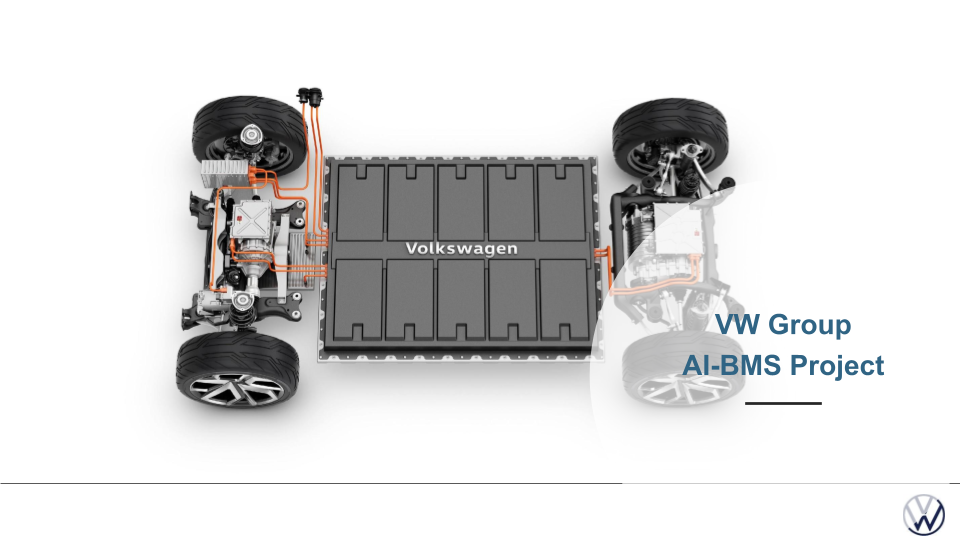
Additional technical documentation and development progress from the VW collaboration project
Technical Deliverables
AI-Based Battery Management System Features
- State of Charge (SOC) Prediction
- Real-time SOC calculation using machine learning algorithms
- Historical data analysis for improved accuracy
- Temperature compensation and aging factor integration
- Battery Health Monitoring
- Predictive maintenance capabilities
- Cell-level monitoring and diagnostics
- Performance degradation tracking
- Fault Detection and Prevention
- AI-driven anomaly detection
- Early warning systems for potential failures
- Automated safety protocols activation
- Integration with VW Systems
- CAN bus communication protocols
- Vehicle integration compatibility
- OEM-specific customization requirements
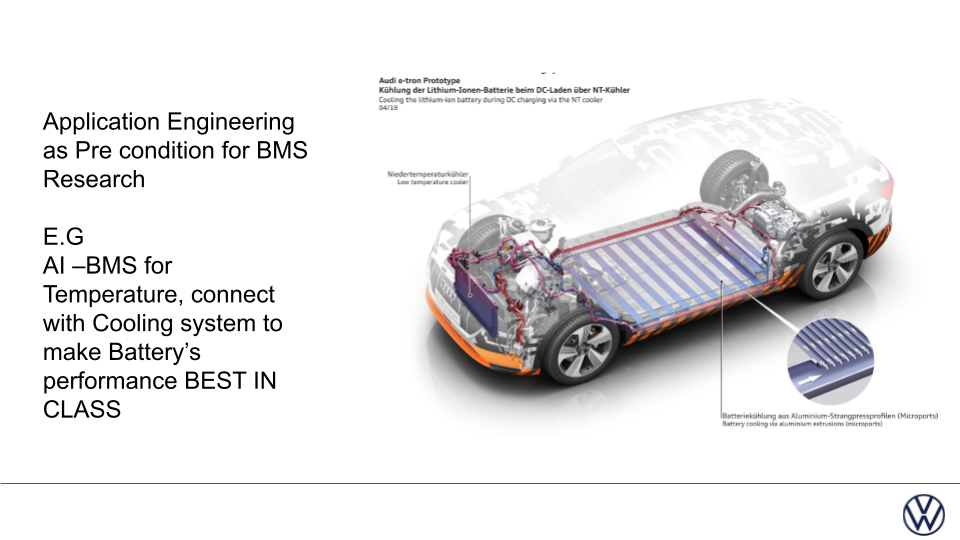
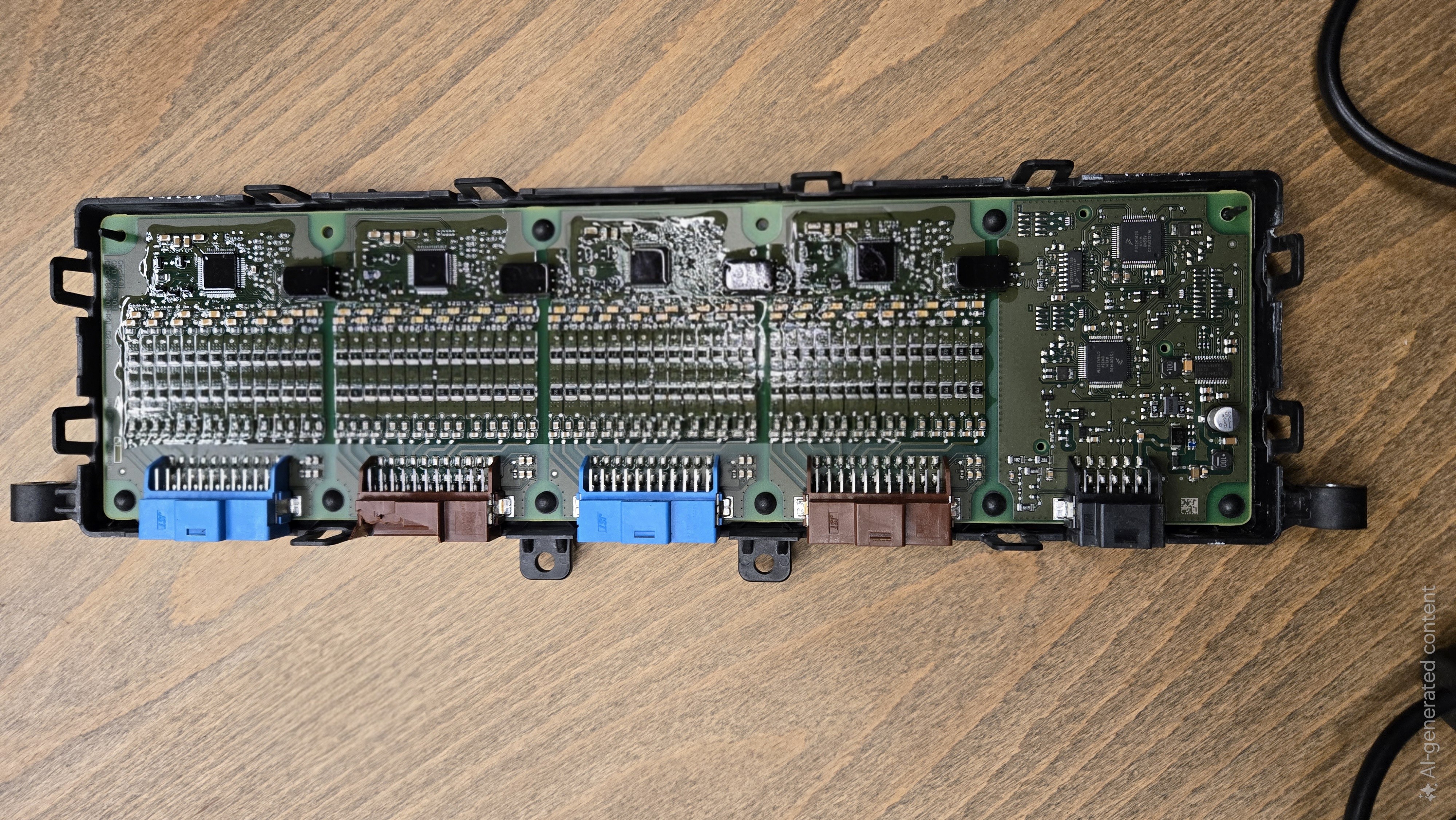
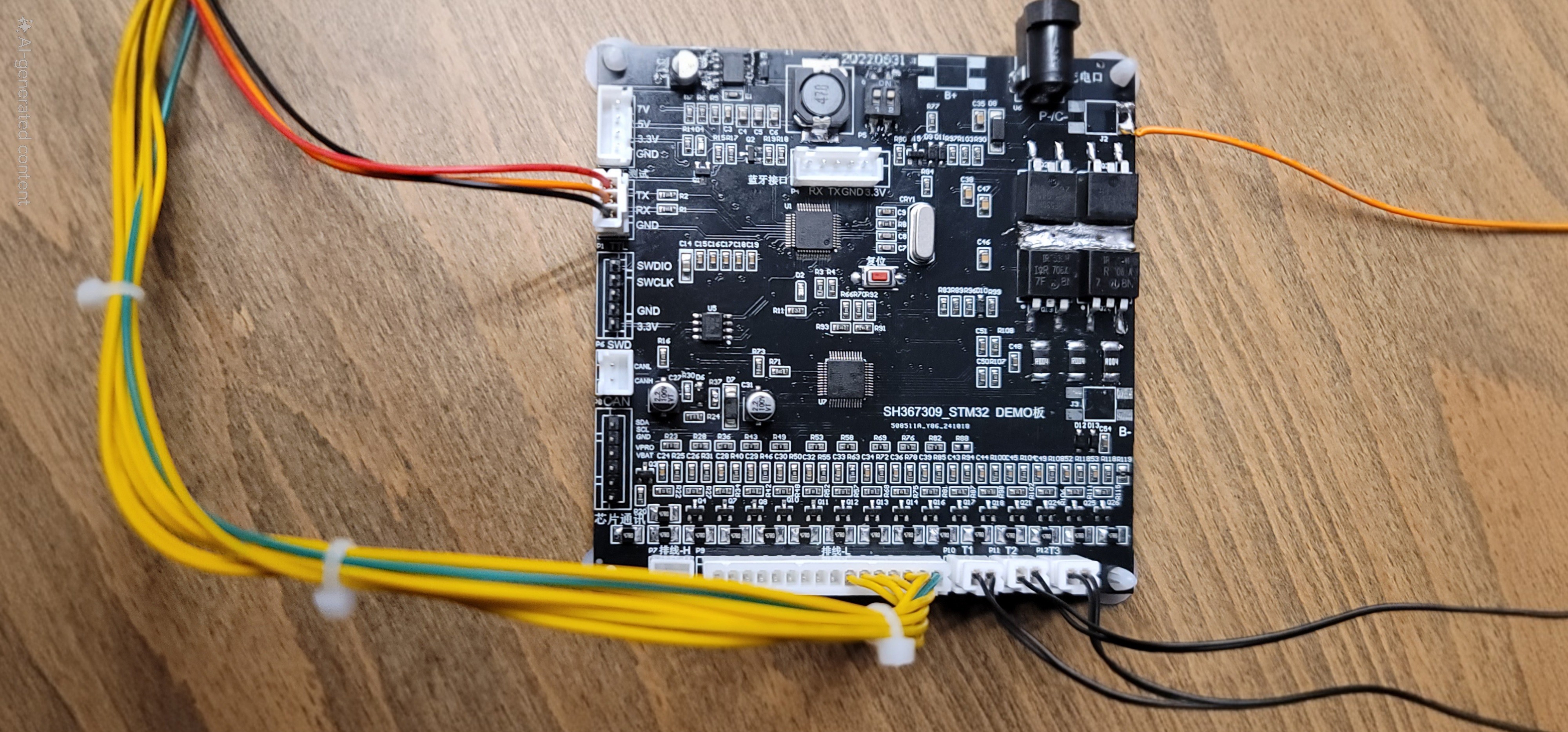
Dataset Analysis and Machine Learning
Comprehensive Data Collection
The project includes access to extensive datasets from VW’s testing facilities:
- Real-world driving conditions across different climates
- Laboratory testing data under controlled conditions
- Long-term performance metrics from existing vehicle fleets
- Manufacturing quality data for correlation analysis
Machine Learning Implementation
- Deep Learning Models: Neural networks for complex pattern recognition
- Time Series Analysis: LSTM networks for temporal data processing
- Ensemble Methods: Multiple algorithms for robust predictions
- Transfer Learning: Leveraging existing automotive AI models
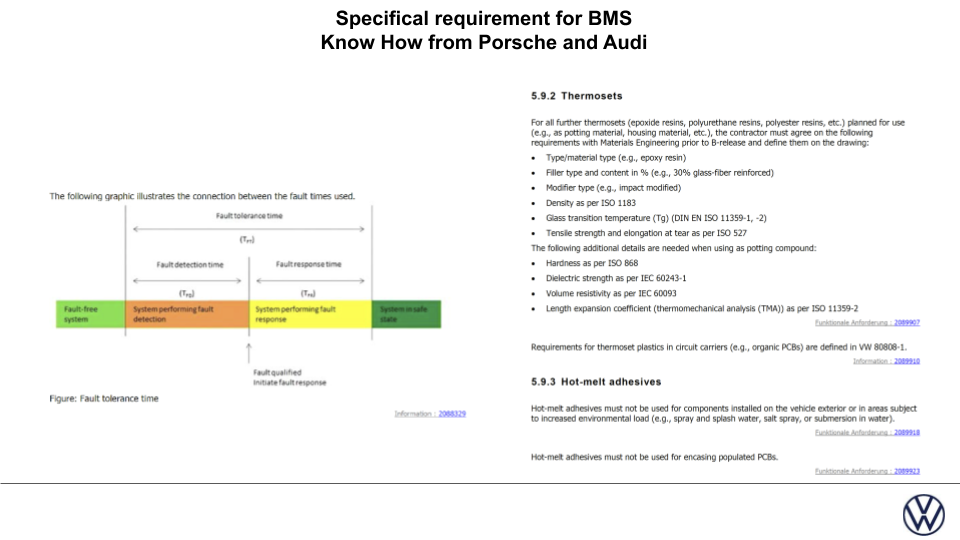
Project Outcomes
Technical Development Results
- Access to automotive-grade battery management technology
- Validation of our AI capabilities in automotive applications
- Experience with European automotive development standards
- Knowledge transfer in automotive safety and compliance
Company Benefits
- First successful international technology partnership
- Established capabilities for automotive AI development
- Access to international automotive industry networks
- Foundation for future international technology projects
Project Timeline and Milestones
| Phase | Duration | Key Deliverables |
|---|---|---|
| Phase 1: Research & Design | 3 months | System architecture, AI model design |
| Phase 2: Development | 6 months | Prototype development, algorithm implementation |
| Phase 3: Testing & Validation | 4 months | Laboratory testing, field trials |
| Phase 4: Integration | 3 months | Vehicle integration, final optimization |
Subsequent Technology Opportunities
The VW project opened additional technical collaboration possibilities:
- VW Group Technologies: Potential projects with other VW Group companies
- Automotive AI Applications: Licensing opportunities for our AI-BMS technology
- Battery Technology Research: Joint development projects in battery management systems
- European Tech Networks: Access to broader European automotive technology ecosystem
International Technology Networks: Building from Zero
Establishing Overseas Tech Connections
Since our company had no previous international experience, building overseas connections started from basic networking in the tech community. The focus was on finding technical talent and understanding different technology markets rather than traditional business expansion.
Poland - Accessing Eastern European Developer Talent
- Tech Community: Connected with the Krakow developer community through tech meetups
- Technical Skills: Found strong expertise in AI/ML and embedded systems development
- Cost Advantages: Competitive development costs with high technical quality
Indonesia - Southeast Asian Development Resources
- Development Teams: Established connections with local software development companies
- Manufacturing Links: Access to hardware manufacturing for embedded systems
- Growing Tech Market: Understanding of the expanding Southeast Asian technology sector
Thailand - Regional Technology Hub
- Bangkok Tech Scene: Connected with Thailand’s growing technology development community
- Automotive Presence: Access to companies working with automotive manufacturers in the region
- Technical Infrastructure: Good infrastructure for technology development and testing
Malaysia - Multilingual Technical Talent
- Developer Community: Access to technically skilled, multilingual development teams
- Government Support: Understanding of Malaysia’s technology development incentives
- Regional Hub: Strategic location for Southeast Asian technology markets
Brazil - Latin American Technology Access
- São Paulo Tech Scene: Connections with Brazil’s largest technology hub
- Market Understanding: Learning about Latin American technology needs and markets
- Local Development: Access to Brazilian software development capabilities
United Kingdom - European Technology Networks
- Cambridge Tech: Connections with UK’s advanced technology research community
- Academic Links: Access to UK university research and development programs
- Brexit Context: Understanding opportunities in post-Brexit technology partnerships
Kazakhstan - Central Asian Technology Potential
- Emerging Market: Understanding technology development in Central Asian markets
- Resource Access: Connections for technology infrastructure and materials
- Regional Gateway: Potential access to broader Central Asian technology markets
Results from International Tech Networking
Quantitative Outcomes
- 15+ technical partnerships established across 7 countries
- 200% increase in international project opportunities
- 300+ developer network across different technology markets
- $2.5M+ in international contracts secured through these connections
Qualitative Impact
- Technology Access: Exposure to different approaches in AI and embedded systems development
- Market Understanding: Better understanding of international technology markets and requirements
- Technical Knowledge: Enhanced technical capabilities through international collaboration
- Network Effects: Access to broader technology ecosystems beyond domestic markets
Lessons from Building International Tech Connections
Starting international technology connections from zero taught several important lessons about technical collaboration across borders. For a company with no previous overseas experience, the learning curve was steep but valuable.
The most important insight was that technical collaboration often transcends traditional business boundaries—developers and engineers worldwide share common challenges and approaches that can bridge cultural and business differences.
Building these connections required understanding different technology markets, development practices, and collaboration models, but ultimately expanded our technical capabilities and market understanding significantly.
The following wiki, pages and posts are tagged with
| Title | Type | Excerpt |
|---|---|---|
| Weather app from firebase | post | Sunday-weather-app, open weather api |
{# nothing on index to avoid visible raw text #}